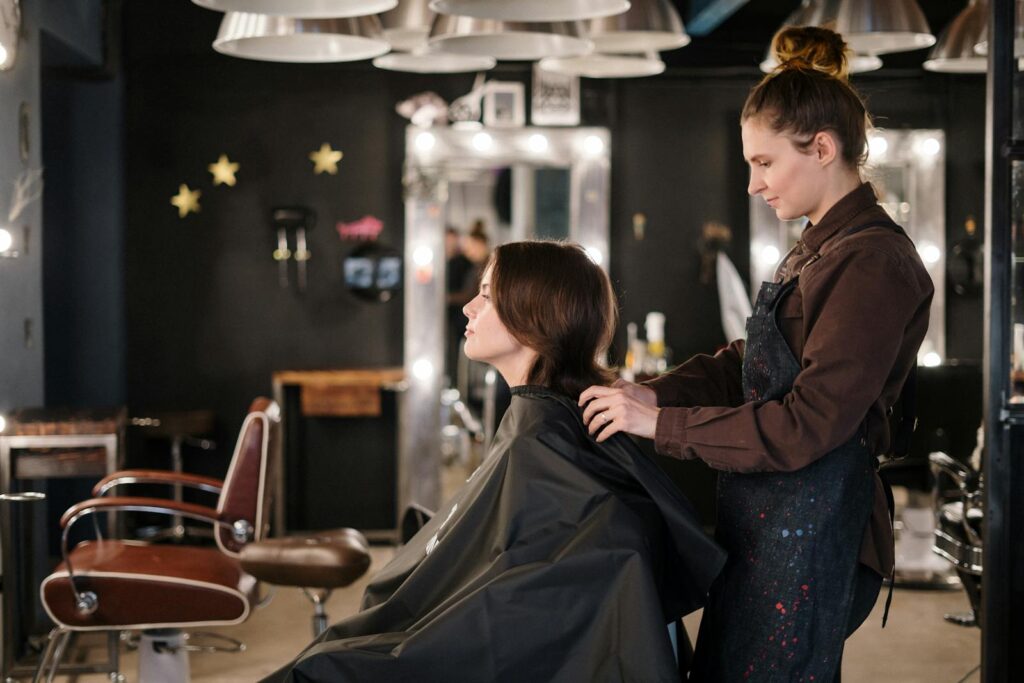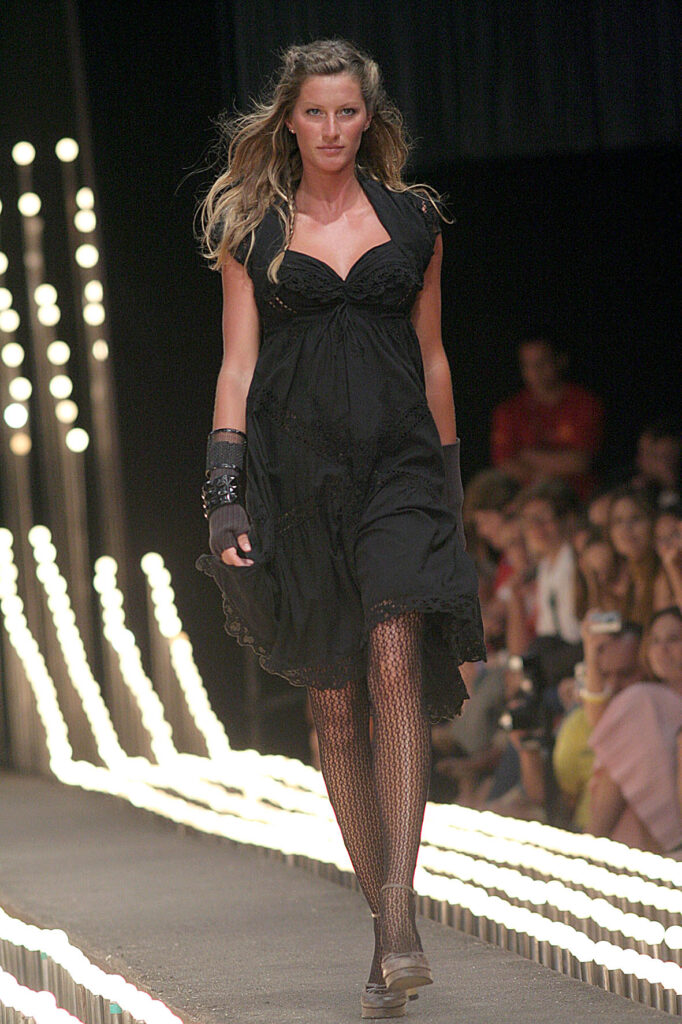
The world of high fashion often appears as a dazzling spectacle, a realm where creativity knows no bounds and celebrity status guarantees an endless parade of bespoke gowns and custom-tailored suits. From the Met Gala’s extravagant themes to the Oscars’ timeless glamour, red carpets are perceived as the ultimate runway, a place where designers and stars converge in a symphony of style. Yet, beneath this polished exterior, a different narrative often unfolds—one of unspoken rules, selective biases, and the surprising challenges faced even by Hollywood’s most beloved and influential figures.
Indeed, the journey to sartorial stardom is not always a smooth one, even for those who command global attention. Take, for instance, the recent revelations from stylist Law Roach, who candidly shared the hurdles he and Zendaya encountered early in her career. He recounted reaching out to the “big five” luxury houses—Saint Laurent, Chanel, Gucci, Valentino, Dior—only to be met with repeated rejections. Their rationale? “No, try again next year. She’s too green. She’s not on our calendar,” Roach recalled. He still has the “receipts” to prove it, emphasizing that even by the time Zendaya landed her American Vogue cover in 2017, she had never worn any of those designers for public appearances.
This isn’t just an isolated incident; it’s a systemic issue that has impacted numerous accomplished individuals across the entertainment spectrum. Despite their talent and rising profiles, many have faced the disheartening reality of designers refusing to dress them, often due to their size, race, or perceived lack of “A-list” status at a particular moment. These are the powerful stories of stars who didn’t just accept a “no,” but instead used their platforms to challenge fashion’s exclusive gates, redefine what it means to be an icon, and ultimately, spark a much-needed style revolution, proving that true fashion isn’t about conformity, but about authentic self-expression.
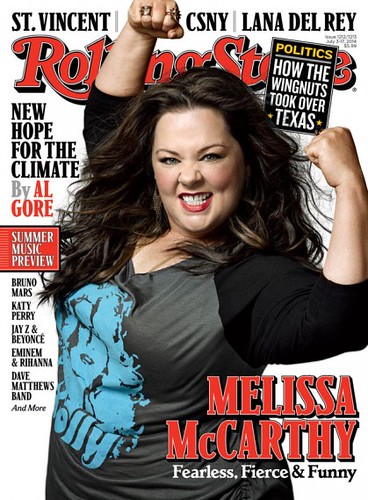
1. **Melissa McCarthy: The Power of Designing Your Own Destiny**Mention Melissa McCarthy’s name, and you instantly think of her incredible talent for comedy and captivating dramatic performances. However, beneath the accolades and laughter, McCarthy encountered a deeply frustrating aspect of the fashion industry that many plus-size women—celebrity or not—can unfortunately relate to. Despite her widespread recognition, she found herself in an impossible situation when seeking a dress for one of Hollywood’s biggest nights.
McCarthy vividly recounted her struggle, revealing that for “Two Oscars ago, I couldn’t find anybody to do a dress for me.” This wasn’t a minor oversight; she actively “asked five or six designers — very high-level ones who make lots of dresses for people — and they all said no.” Imagine the disbelief: a beloved, Oscar-nominated actress, a household name, being turned away simply because the industry wasn’t prepared to accommodate her body type.
But Melissa McCarthy is not one to be deterred. Her frustration quickly transformed into inspiration and action. Instead of lamenting the industry’s limitations, she decided to challenge them head-on, launching her own inclusive fashion line with Daniella Pearl in 2014. This wasn’t just about personal convenience; it was a powerful statement to an industry that often overlooks a significant portion of the population, demonstrating that style and sophistication are not exclusive to a particular size.
Her venture into design wasn’t just a passion project; it was a practical, empowering step that carved out a space where fashion could truly be for everyone. McCarthy’s move resonated deeply, shining a spotlight on the widespread demand for chic, well-fitting clothing in all sizes, and proving that when the established channels say no, innovators can—and should—create their own paths.

2. **Leslie Jones: A Tweet Heard Around the World, and a Designer Who Listened**Leslie Jones, known for her electrifying comedic presence and unforgettable roles, faced a similar, disheartening predicament as she prepared for a major movie premiere. In 2016, leading up to the “Ghostbusters” premiere, Jones took to social media, voicing her frustration in a tweet that quickly went viral: “It’s so funny how there are no designers wanting to help me with a premiere dress for movie. Hmmm that will change and I remember everything.”
Her candid post exposed a raw nerve in the fashion world, highlighting the ongoing struggle for diverse body types to be embraced by high-end designers. It was a moment of vulnerability that resonated with countless individuals who had felt similarly excluded. What happened next, however, became a beacon of hope and a testament to the power of allyship.
Renowned designer Christian Siriano swiftly responded to Jones’s tweet with two simple yet powerful emojis: a hand and a wave. This seemingly small gesture blossomed into a beautiful collaboration, with Siriano custom-designing a stunning dress for Jones. He didn’t just provide a gown; he provided validation and a platform for change, proving that true fashion leadership involves inclusivity.
Siriano didn’t stop there. He used the moment to deliver a profound message on Facebook, stating, “It shouldn’t be exceptional to work with brilliant people just because they’re not sample size. Congrats aren’t in order, a change is.” This statement encapsulated the very essence of the problem and the urgent need for a shift in industry standards. Their partnership has since flourished, with Siriano becoming a go-to for Jones’s show-stopping red carpet looks, consistently demonstrating that talent and style know no size.

3. **Bryce Dallas Howard: The Bold Choice of Department Store Chic**When Bryce Dallas Howard graced the red carpet at the 2016 Golden Globes, her stunning Jenny Packham dress turned heads for all the right reasons. But it wasn’t just the elegance of the gown that captivated; it was her refreshingly honest answer when asked about its designer. Instead of listing an exclusive atelier, Howard simply stated that she bought the dress herself at Neiman Marcus earlier that week.
This wasn’t a celebrity faux pas; it was a deliberate and empowering choice. Howard explained her reasoning with a practicality that resonated deeply with many: “It was refreshing to go into a store and have many dress options in size six instead of the one that designers may or may not have for her.” Her statement highlighted a quiet but prevalent struggle, even for actresses who aren’t considered “plus-size” by industry standards but still fall outside the often-unattainable sample size.
Her decision wasn’t born out of necessity in the way some others’ might have been, but out of a desire for genuine choice and agency. By opting for a department store purchase, Howard sidestepped the often-restrictive loaning process controlled by designers, choosing instead to celebrate accessibility and personal preference. It was a subtle yet powerful message about reclaiming control over one’s own style, proving that true glamour can be found beyond the exclusive showrooms.
Howard’s practical approach became a refreshing trendsetter, demonstrating that you don’t need a designer loan to make a statement on the red carpet. Her confidence in her choice underscored a broader truth: fashion should serve the individual, not the other way around. It was a powerful reminder that style is ultimately about what makes you feel good, regardless of its label or origin.

4. **Octavia Spencer: Candid Reflections on Red Carpet Pressures**Octavia Spencer, an Academy Award-winning actress celebrated for her incredible depth and versatility, has also experienced the unique pressures and biases of the fashion industry. Just a week before her well-deserved 2012 Golden Globes win, Spencer candidly admitted to reporters that she was still struggling to find a dress for the prestigious event. Her honesty offered a rare glimpse behind the curtain of red carpet glamour.
On the red carpet at the Palm Springs International Film Festival, she shared her relatable frustration, describing herself as “just a short chubby girl.” She elaborated on the challenge, stating, “It’s hard for me to find a dress to wear to something like this! It’s a lot of pressure, I’ll tell ya. No designers are coming to me!” This poignant confession brought to light the often-unspoken reality for many talented individuals who don’t fit the industry’s narrow mold of ideal celebrity sizing.
Spencer’s remarks were not a complaint, but an illuminating observation on the systemic issues at play. She even injected a touch of humor into her candid reflection, quipping, “Maybe I should have sworn off peanut butter last year instead of this year.” This lightheartedness, however, underscored a serious point: the expectation that celebrities should conform to a specific aesthetic, even when their natural body type makes it a challenge to find suitable designer options.
Her powerful statement, “One of the best things about awards shows are you get to wear clothes you would never get to wear,” simultaneously celebrated the joy of dressing up while subtly critiquing the scarcity of options for women like her. Octavia Spencer, through her openness, became a voice for many, revealing that even at the pinnacle of success, the fashion industry can still feel like an exclusive club, making the act of simply finding a dress an uphill battle.

5. **Rachel Bloom: The $3,500 Gucci Statement and a Quick Resale**Rachel Bloom, the brilliant mind behind “The Crazy Ex-Girlfriend,” brought her characteristic wit and honesty to the red carpet when discussing her 2017 Emmys attire. Instead of accepting a designer loan, Bloom made a bold choice that perfectly encapsulated her no-nonsense approach to industry expectations: she bought her own $3,500 Gucci dress for the event after the brand reportedly refused to dress her.
Her decision wasn’t just about acquiring a dress; it was a clear and assertive statement against the discriminatory practices she encountered. On the red carpet, she matter-of-factly explained her situation to E!: “It is hard to get places to lend to me because I am not a size zero, but also I can afford it, so it’s OK.” This quote brilliantly highlights the double standard, where a celebrity’s financial capability doesn’t automatically grant them access if they don’t meet an arbitrary size requirement.
Bloom’s actions spoke volumes. She didn’t dwell on the rejection; she simply found a solution and moved forward, demonstrating self-reliance and an unwavering sense of self-worth. Her experience resonated with countless women who have faced similar sizing biases in the fashion world, showcasing the absurdity of high-end brands alienating potential clients based on dress size.
And in a move that truly solidified her iconic status in this narrative, Bloom took her practicality a step further. The very next day after the Emmys, she sold the $3,500 Gucci dress on The RealReal. It was the ultimate mic drop, transforming a moment of exclusion into a powerful statement about valuing substance over superficial status, and proving that sometimes, the best fashion statement is one of defiance and smart financial sense.
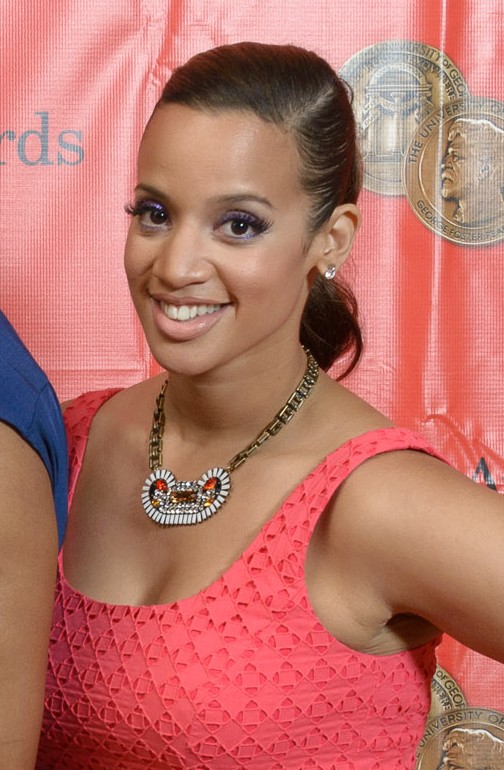
6. **Dascha Polanco: The Sting of Personal Investment and Public Rejection**Dascha Polanco, celebrated for her role in “Orange Is the New Black,” offered a particularly poignant account of designer discrimination, one that speaks to the deeper emotional impact of such rejections. Her story wasn’t just about finding a dress for an event; it was about a personal connection to a brand and the subsequent feeling of being overlooked despite her loyalty and investment.
Polanco candidly shared her struggle to find brands willing to collaborate with celebrities who didn’t fit the narrow definition of a “sample size.” She recounted a specific incident to Vogue: “I had a situation with a high-end brand the other day where I had personally invested so much money purchasing their items, and I love what they do, so I had my publicist reach out to their PR team.” This was a star who genuinely admired and supported the brand with her own resources.
However, her enthusiasm was met with a cold, corporate brush-off. The brand’s response was blunt and dismissive: “Oh, you’re not the sizes we have, not right now, maybe in the future.” This wasn’t just a rejection of a celebrity for a single event; it was a denial that devalued her as a loyal customer and a public figure, implying her body type was an inconvenience to their aesthetic.
Polanco’s experience underscores the profound disappointment that arises when personal appreciation for a brand is met with a lack of inclusivity. Her story powerfully illustrates how these biases extend beyond mere logistics, impacting self-perception and the sense of belonging within the glamorous, yet often exclusionary, world of high fashion. It’s a call for brands to recognize the diversity of their clientele and to extend their vision beyond a limited size range.
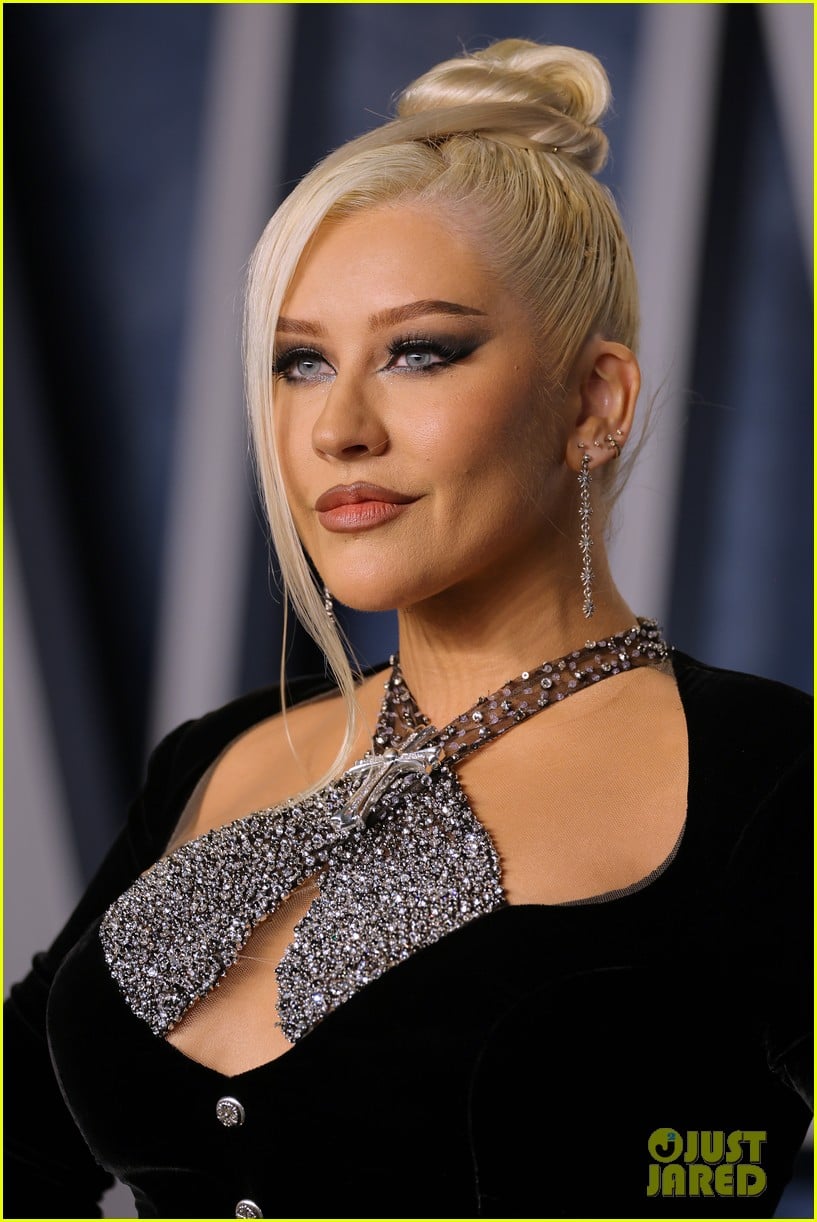
7. **Christina Hendricks: The ‘Mad Men’ Bombshell Who Couldn’t Get a Dress**Christina Hendricks, instantly recognizable for her iconic role in “Mad Men” and her celebrated embrace of curves, represents yet another facet of the fashion industry’s perplexing biases. Despite being a widely admired actress whose distinctive silhouette has been lauded by countless fans and critics, Hendricks found herself in the challenging position of struggling to secure designer gowns for major awards ceremonies.
Hendricks, who wears a size 12, revealed in a 2010 Glamour interview the significant hurdles she faced. She highlighted the frustrating reality that “It is difficult come awards season, and I need to find a gown to walk down the red carpet in, and there are only size zeros and size twos available.” This stark discrepancy between the available options and the needs of a celebrated actress speaks volumes about the industry’s narrow scope.
Her experience wasn’t just a minor inconvenience; it became “downright annoying” when faced with the contradictory feedback from designers. She quoted their responses directly: “all these designers are saying, ‘We love ‘Mad Men,’ we love Christina, but we won’t make her a dress.” This sentiment perfectly encapsulates the baffling paradox where a celebrity’s popularity and acclaimed status are acknowledged, yet their physical form is deemed incompatible with high fashion’s rigid standards.
Hendricks’ candidness shed light on the pervasive issue of designers praising a celebrity’s image while simultaneously refusing to dress them if they don’t conform to an arbitrary sample size. Her story is a powerful reminder that even those who are celebrated for challenging conventional beauty standards can still encounter significant resistance and exclusion within the traditional fashion establishment.”
Breaking the Mold: Insights from Eight More Influential Figures Who Redefined Style Norms and Championed Diversity in High Fashion
As we continue our journey through the red carpet’s hidden narratives, it becomes increasingly clear that the fight for inclusivity in fashion is a widespread and ongoing one. The voices of trailblazing women who’ve refused to be confined by arbitrary industry standards are not just individual anecdotes; they form a powerful chorus demanding change. From advocating for more options to launching their own ventures, these celebrities aren’t just wearing clothes—they’re wearing their convictions.
Now, let’s turn our attention to eight more influential figures who have bravely stepped forward, challenging the status quo and demonstrating that true style knows no bounds of size, origin, or expectation. Their stories are a testament to resilience, creativity, and the unwavering belief that fashion should be a form of empowerment for all.

8. **Amber Riley: The Call for Ready-to-Wear Inclusivity**Amber Riley, known for her powerful vocals and commanding stage presence, added her voice to the chorus demanding more inclusive fashion options. In 2015, she openly supported blogger Gabi Fresh’s viral Twitter thread, which passionately called out the severe lack of event-ready clothing for plus-size women. Riley’s solidarity highlighted a problem many women face daily, amplifying the message that stylish options should be a given, not a rarity.
Her experience brought to light the frustrating reality that beyond the custom-made realm, very few stores actually stock readily available and stylish options in larger sizes. This means that for plus-sized actresses, finding unique and appropriate attire for high-profile events often becomes a stressful scavenger hunt, severely limiting their choices and individuality. It’s a stark contrast to their smaller-sized counterparts, who often have an abundance of loaned garments at their disposal.
Riley’s advocacy underscored a very practical, yet often overlooked, challenge: when options are so limited, the chances of seeing other women in the same dress on the red carpet increase exponentially. This can be a nightmare scenario for any celebrity striving for originality and a distinct personal brand. Her insights serve as a potent reminder that true diversity in fashion must extend beyond just a few custom pieces to the readily available retail landscape.

9. **Gabourey Sidibe: Embracing Freedom Through Self-Acceptance**Gabourey Sidibe, an Academy Award-nominated actress celebrated for her phenomenal talent and authenticity, offers a refreshingly defiant perspective on the fashion industry’s biases. While she candidly admits that her size often makes finding clothing difficult, both for everyday wear and high-profile events, her attitude transcends mere frustration. Sidibe has transformed what could be a limiting factor into a source of personal empowerment.
Instead of feeling constrained by the industry’s narrow standards, Sidibe finds freedom in her unique position. She famously told Harper’s Bazaar, “I don’t really care because it gives me more freedom.” This powerful declaration is a testament to her unshakeable confidence and a direct rejection of the notion that her worth or style is dictated by a dress size or a designer label. Her approach offers a blueprint for how to navigate a judgmental world with grace and self-assurance.
Sidibe’s stance is a beacon for anyone who has ever felt overlooked or undervalued by mainstream fashion. By choosing to embrace her body and define her own style, she sends a clear message: true fashion is about how you feel in your clothes, not what others dictate. Her journey inspires us to find our own strength and sartorial voice, regardless of external pressures, proving that genuine self-love is the most fashionable accessory of all.
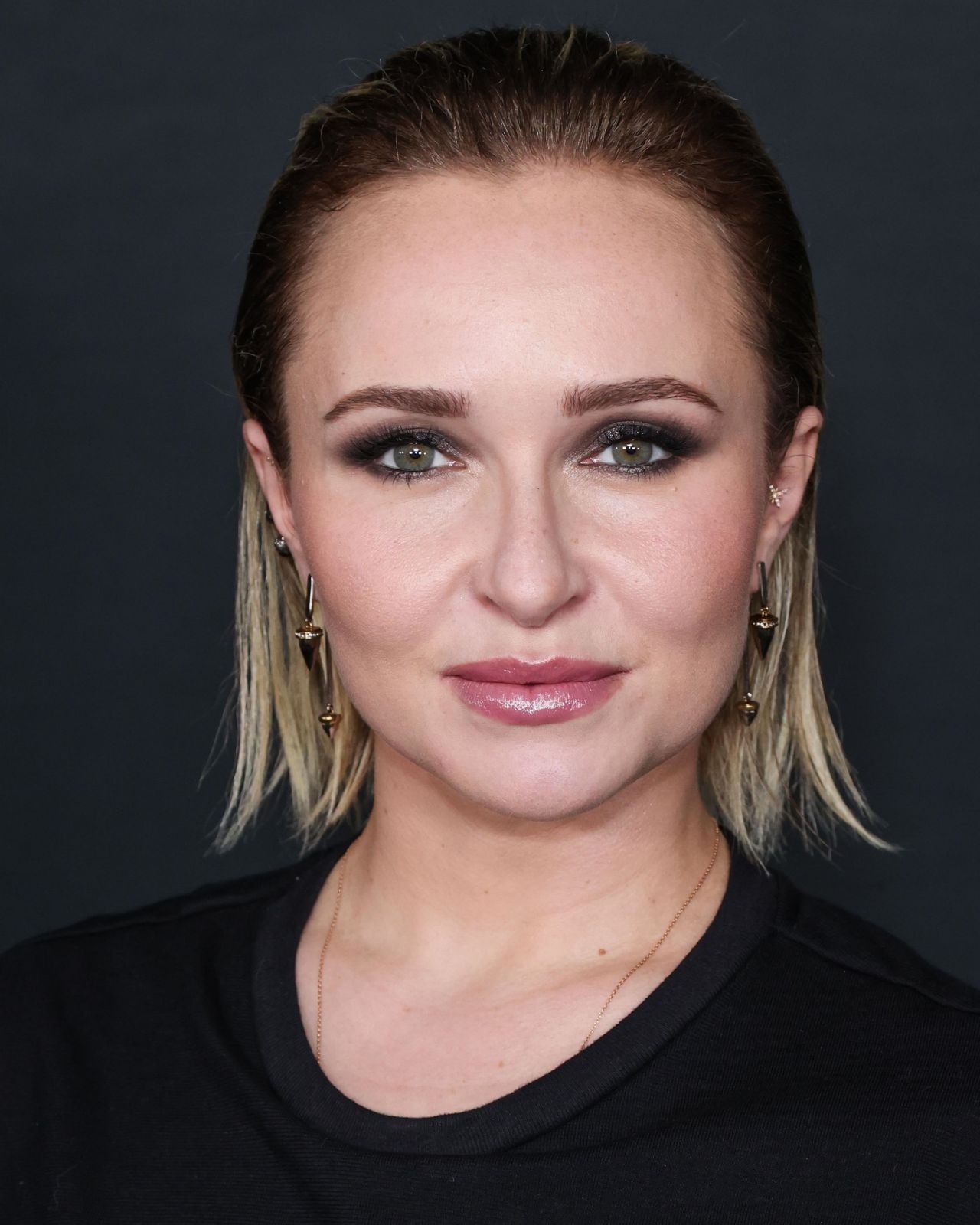
10. **Hayden Panettiere: The Power of Personal Purchase**Hayden Panettiere, a beloved actress known for her roles in hit shows like “Nashville,” demonstrated a quiet yet impactful form of defiance at the 2014 Golden Globes. Faced with an exclusive industry practice, Panettiere refused to let a designer’s limitations dictate her red-carpet appearance. Her decision became a memorable moment that spoke volumes about agency and determination in a world often driven by designer loans.
The story goes that esteemed designer Tom Ford had chosen to dress only one actress for that year’s Golden Globes, leaving many others, including Panettiere, without an option from his coveted collection. Instead of being deterred or settling for a different brand, Panettiere took matters into her own hands. She went out and purchased her own Tom Ford masterpiece, wearing it proudly on the red carpet.
This wasn’t just about owning a designer dress; it was a powerful statement about personal choice and reclaiming control. Panettiere’s action underscored that true style isn’t about being chosen by a brand, but about choosing what makes you feel confident and beautiful. Her decision empowered countless individuals to remember that if the traditional avenues aren’t open, there’s always the option to forge your own path, proving that fashion truly belongs to those who dare to wear it on their own terms.
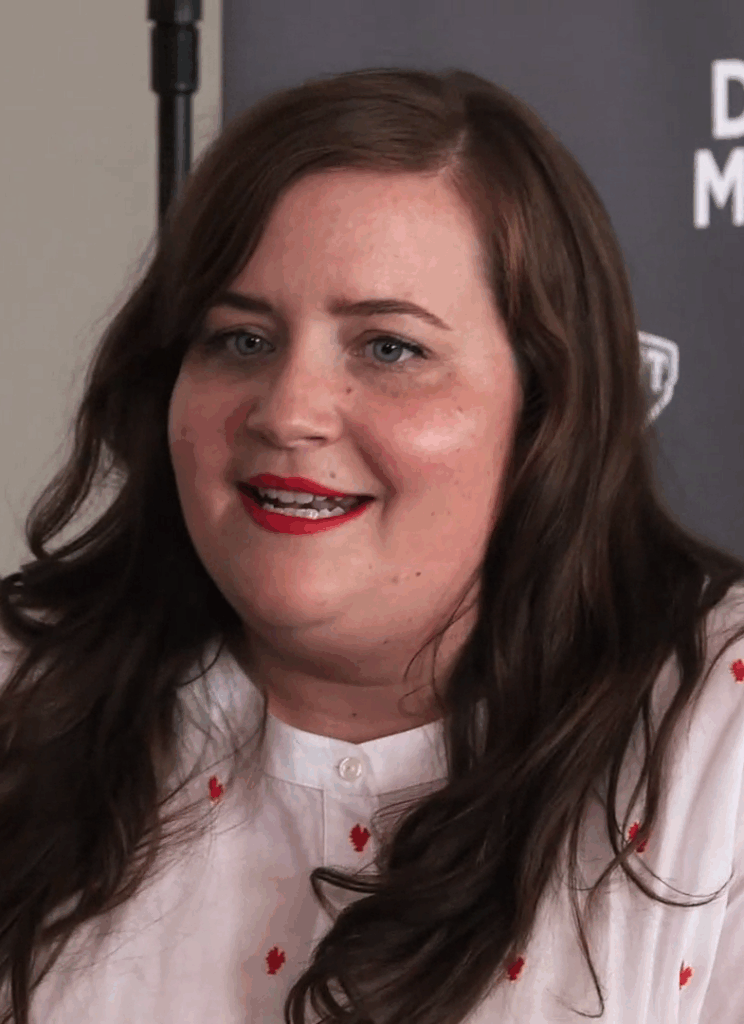
11. **Aidy Bryant: Eloquii Answers the Call for Plus-Size Customization**Aidy Bryant, the comedic genius and Emmy-nominated star of “Saturday Night Live,” has been a consistent and vocal advocate for plus-size representation in fashion. For years, she described a frustrating reality of “begging” high-end designers for dresses that could accommodate plus-sized women in film and television for major events. Her experience highlighted a glaring gap in the industry, where talent and visibility didn’t always translate into sartorial access.
Her persistence and public candor finally paid off in a meaningful way when Eloquii, a brand dedicated to plus-size fashion, approached her with an offer that truly resonated. Bryant was thrilled when Eloquii stepped up to create a custom dress for her for the 2016 Emmys, a moment that became a beacon of hope for many. This collaboration wasn’t just about a single outfit; it symbolized a recognition of the immense, untapped market of women who desire stylish, well-fitting clothing.
This partnership demonstrated the power of brands listening to their audience and challenging the outdated norms of the fashion world. Bryant’s experience with Eloquii proved that inclusivity isn’t just a buzzword; it’s a practical, beautiful reality that can be achieved when designers genuinely commit to dressing women of all sizes. Her story is a testament to the fact that when the right designers step forward, everyone gets to shine on the red carpet.

12. **Ashley Graham: Breaking Barriers on the British Vogue Cover**Ashley Graham, a global supermodel and fierce advocate for body positivity, made history by gracing the January 2016 cover of British Vogue, a monumental step forward for diversity in high fashion. Yet, her groundbreaking achievement was not without its challenges, shedding light on the persistent biases even at the highest echelons of the industry. Her editor revealed the surprisingly difficult process of securing designer clothing for the shoot.
In her editor’s letter, British Vogue editor-in-chief Alexandra Shulman candidly disclosed that many brands “flatly refused” to lend clothing to Graham because she fell outside the industry’s restrictive “sample range.” This shocking revelation underscored the deeply ingrained prejudice against diverse body types, even for a model as prominent and successful as Ashley Graham. It illustrated how archaic standards can impede even the most forward-thinking editorial visions.
Thankfully, one brand enthusiastically answered the call: Coach. Their willingness to dress Graham for the cover not only showcased their progressive values but also highlighted the immense impact a single brand can have in championing inclusivity. Graham’s experience, while challenging, ultimately sent a powerful message: true fashion embraces and celebrates all body types, and the industry must evolve to reflect the beautiful diversity of its audience. Her journey continues to inspire a more inclusive vision of beauty and style globally.

13. **Beyoncé: From Hand-Made to High Fashion Icon**Today, designers would clamor for the opportunity to dress Beyoncé, one of the most influential and iconic figures in music and fashion history. However, as Queen Bey herself revealed, her journey to sartorial superstardom was not always paved with designer gowns. Her candid reflections offer a rare glimpse into the early struggles faced by Destiny’s Child, highlighting systemic biases against their groundbreaking image.
In her moving acceptance speech for the Fashion Icon Award at the Council of Fashion Designers of America, Beyoncé shared that during her Destiny’s Child days, her beloved mom, Tina Knowles-Lawson, made all of their costumes by hand. The reason was painfully clear: high-end labels “didn’t really want to dress four black, country, curvy girls.” This statement powerfully articulated the exclusion and racial and body biases prevalent in the fashion industry at the time.
Beyoncé’s story is a testament to perseverance, self-reliance, and the power of creating your own lane when others shut doors. It’s a powerful reminder that true style and influence can emerge from anywhere, even when established institutions refuse to recognize it. Her journey from hand-sewn outfits to a global fashion icon is an inspiring narrative of breaking barriers and redefining beauty on her own magnificent terms.

14. **Khloe Kardashian: The Unseen Struggle Before Transformation**Before her highly publicized 40-pound weight loss, Khloe Kardashian, a prominent figure in reality television and entrepreneurship, also experienced the disheartening reality of fashion industry bias. Her experience sheds light on how even those from famous families can face exclusion when they don’t conform to specific body ideals. She spoke openly about the difficulties of finding suitable clothing options during photo shoots, revealing a less glamorous side of her early career.
Khloe candidly told Harper’s Bazaar about the disparity she faced compared to her sisters: “There would always be this attention on Kourtney and Kim, but I was too much work for (stylists) or they had nothing in my size. I wasn’t even that crazy big!” This quote poignantly highlights the arbitrary nature of industry standards, where even a slightly larger size could lead to professional challenges and a feeling of being less valued.
Her experience underscores the emotional toll such biases can take. Fortunately, Khloe found a powerful ally in her long-time stylist, Monica Rose, who consistently made her “feel special” regardless of her size. This personal connection proves the invaluable role stylists play in advocating for their clients and creating empowering experiences, even within a challenging industry. Khloe’s story is a powerful reminder that everyone deserves to feel special and celebrated in their clothing choices.
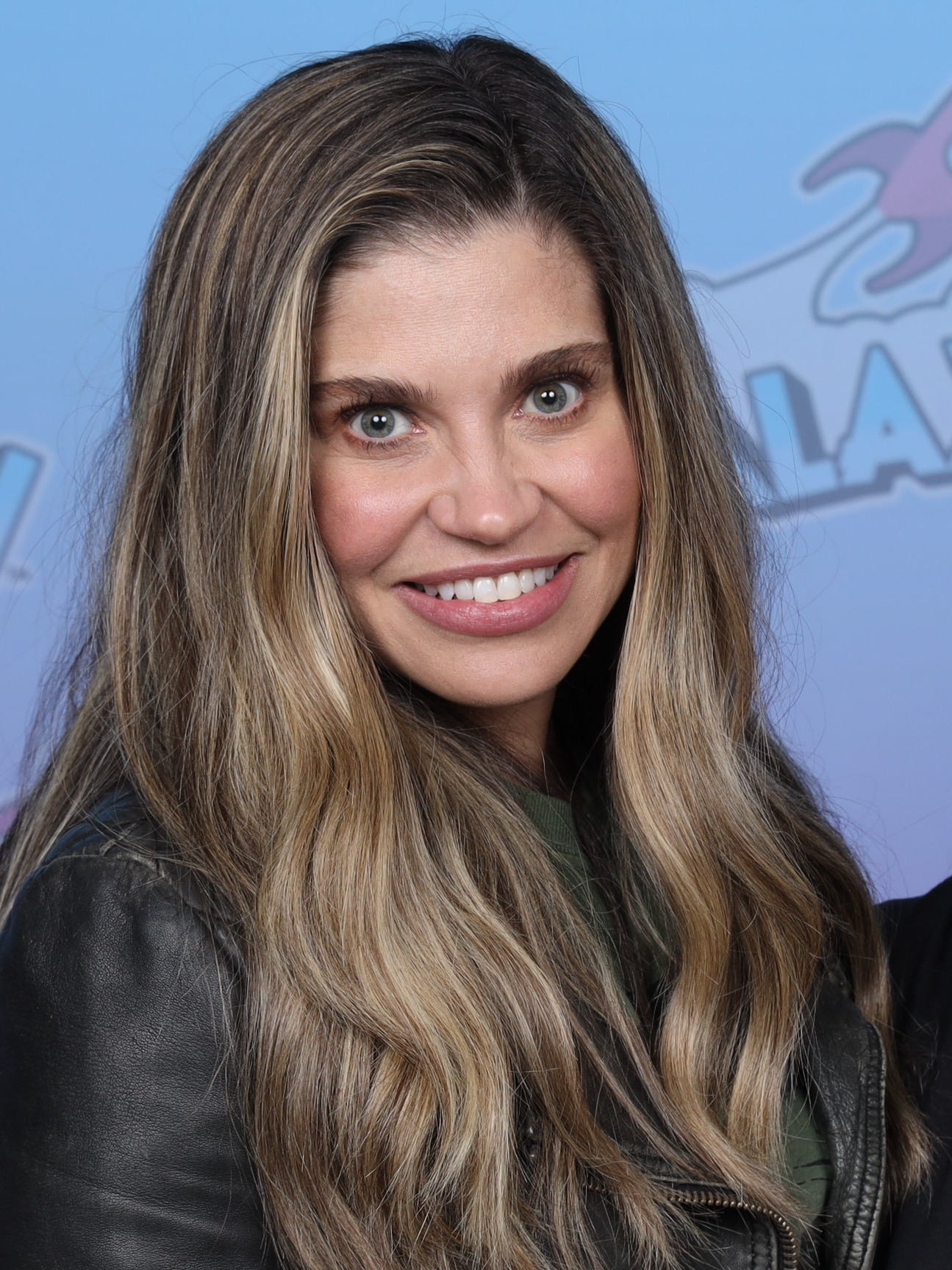
15. **Danielle Brooks: A Staggering Statistic and a Call to Action**Danielle Brooks, the acclaimed actress celebrated for her vibrant performances on screen and stage, offers perhaps one of the most direct and compelling calls to action regarding fashion inclusivity. With unwavering clarity, she articulates the glaring disparity between the demographics of women and the choices offered by high fashion, challenging the industry to reckon with its outdated practices.
In an interview with PeopleStyle, Brooks aptly pointed out a staggering statistic: “67 percent of women in the world are classified as plus-sized.” This fact alone begs the critical question she then posed to the industry: “So why are we not dressing for (them)?” It’s a powerful, undeniable argument that highlights the vast, underserved market that designers are actively ignoring, missing out on both immense talent and significant economic opportunity.
Brooks openly shared the emotional impact of this exclusion: “It makes you feel like you’re ‘less than’ when you only have four options and three of them are in black or blue. It’s really not fun.” She went further, challenging the very notion of who gets to be a fashion “It” girl: “I don’t see why I can’t get to wear Tom Ford or why I can’t wear Gucci or whatever those big name brands are. I don’t understand why I can’t be your ‘It’ girl.” Her powerful words are a rallying cry, demanding that the fashion world expand its vision, break down its restrictive barriers, and embrace the vibrant, diverse beauty that exists in the real world.
These incredible women, through their individual experiences and collective voices, have not just challenged the fashion establishment; they have irrevocably reshaped it. From the red carpet to magazine covers, their unwavering commitment to authenticity and inclusivity has ignited a much-needed revolution. They remind us that fashion is more than just clothes; it’s a powerful tool for self-expression, identity, and, ultimately, a reflection of a society that is finally learning to celebrate every body, every style, and every story. The era of exclusive fashion is fading, and in its place, a vibrant, diverse, and truly empowering landscape is emerging, where every woman can find her voice and her glam. And honestly, isn’t that just the most fabulous trend of all?

